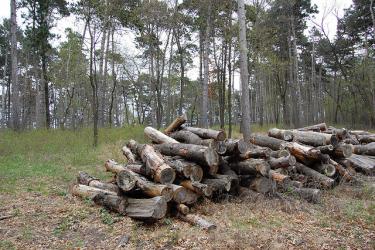Things to Watch Out For
Unfortunately, your harvest isn’t entirely under your control. While some landowners choose to harvest their own timber, most don’t have the time or expertise to safely do so.
That means that once you’ve carefully crafted the right plan for your woods, that plan will be carried out by the loggers on your site—and they could very well make mistakes.
That’s why it’s strongly recommended that you or your forester check on the harvest operation throughout, to oversee the activities and make sure everyone is on the right track. But how do you know if things are going wrong?
Here’s what to watch out for:
- A buyer who wants to change your harvest plan. If the buyer starts pushing you to harvest only those trees above a certain diameter, for example, then watch out. This practice is called diameter-limit cutting or “high-grading,” and its aim is to get only the highest-quality trees from your forest. That will cause your overall forest health to decline. Your buyer should respect your harvest plan.
- Residual damage to other trees. Widespread trunk damage on trees that weren’t marked for sale indicates a careless harvest.
- Deep ruts in your soil. These ruts cause tree root damage and soil erosion, and they can harm the long-term productivity of your woods. If you have sensitive soil, you’ll either need to schedule your harvest in mid-winter, when the ground is frozen, or in mid-summer, when it’s often dry.
- Missing trees in your stands, or excess harvested trees. You want to make sure only the trees you and your forester marked have been cut.
- Trash at the harvest site.
If you should notice any of these warning signs on your timber harvest site, contact the buyer or buyer representative.
How can I get more tips?
It’s simple! Enter your email below.

